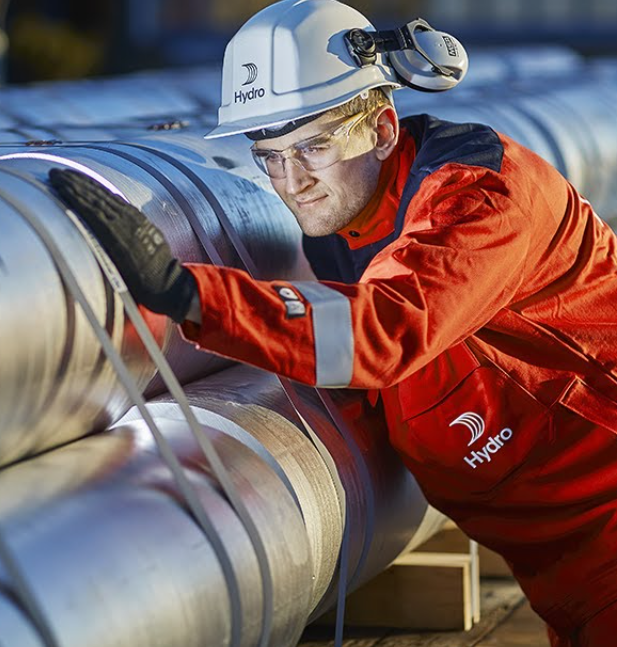

Full year 2023 adjusted EBITDA amounted to NOK 22,258 million, compared with NOK 39,664 million in 2022. The decline was primarily due to reduced sales prices for aluminium and alumina, decreased volumes in extrusions and recycling, elevated fixed costs, and diminished proceeds from power sales. However, these adverse impacts were partially mitigated by decreased raw material expenses, increased margins in Extrusions, and favourable currency effects.

2023 result
Demand for extruded products fell by 17 per cent yearly in European markets. Even with these changes, Hydro Extrusions delivered their second-highest adjusted EBITDA of NOK 6,480 million, as growth in high-margin segments offset a large share of the volume decline.
All business areas, except bauxite & alumina, delivered returns above their cost of capital in challenging markets during 2023. The adjusted RoaCE for 2023 ended at 7.1 per cent, heavily influenced by challenging alumina market conditions and high growth and return-seeking investments in the year. Over the last five years, the adjusted RoacE has been 11 per cent, above Hydro’s target of 10 per cent over the cycle.
Due to the expected challenging alumina markets in short-, medium-, and long-term power price insecurity for the partly owned Tomago aluminium plant in Australia, Hydro reported a total impairment loss of approximately NOK 4.9 billion in the fourth quarter results. However, during the last few months, the alumina market has tightened, and PAX price increased on the back of refinery curtailments and concerns around bauxite shipments from Guinea.
During the fourth quarter, an important milestone towards the 2025 strategy was the completion of the USD 1.11 billion transactions for the sale of 30 per cent of the Brazilian alumina refinery Hydro Alunorte and Hydro’s 5 per cent interest in the bauxite producer Mineracão Rio does Norte (MRN). With the December 1, 2023 transaction, Hydro will be more balanced about the demand for alumina from the aluminium smelter portfolio. The transactions enable capital reallocation into strategic growth areas, strengthening Hydro’s earnings resilience in a rapidly changing global landscape.
Hydro remains steadfast in its commitment to lead the charge in the transition to green aluminium powered by renewable energy sources. Despite facing challenges, the momentum of the green transition continues unabated, with sustained demand for aluminium from sectors supporting this shift. Recognizing the complexities of achieving a low-carbon circular economy, Hydro is prepared to make bold decisions, viewing the green transition as a fundamental megatrend upon which the company will strategically build its future.
Changing the aluminium game
The market for greener aluminium is growing at a high pace. Combined with the roadmap Hydro has set out towards 2030 to pioneer the green aluminium transition, the company believes in a significant value creation potential for Hydro. Hydro’s ability to utilize the company’s integrated value chain to deliver low-carbon products with a strong sustainability profile will create value for customers and shareholders.
Hydro is already a front-runner offering market-leading low-carbon products. The new 2030 strategy has several paths leading towards net zero by 2050 or earlier, stepping up the efforts to decarbonize its value chain and changing the game for aluminium. These include clear targets and tangible milestones addressing climate, nature and social impacts from mining, refining and energy generation to electrolysis and extrusions, as well as ambitious targets to increase the use of post-consumer scrap.
Responses








